On October 14, 2018, Rick and I left Cool Change in Raiatea, French Polynesia and flew to New Zealand for a two week driving tour around the North Island, followed by a two week Royal Caribbean cruise around both islands. While this technically was not part of our Cool Change story, I thought it might be fun to include our trip to New Zealand in our blog. After all, we were “sailing” in part of it, if you consider being transported in a 110o foot moving resort as “sailing.”
A “Blessed” Country
The retired fisherman camped next to us at the no-cost lakeside camping area, the young woman manager at the youth hostel, the Maori guide of our cave tour, they all said the same exact words: “We feel blessed” to live in New Zealand. They are so proud of their country, as they should be. But not in a braggart sort of way; more in a modest way, as if to say, “We feel so lucky.” Everyone we met went out of their way to give us tips of where to go, what to do and how to do it, like they just couldn’t wait to share their beautiful country and everything in it with us. New Zealand is a land of an abundance of natural resources. Fertile ground, towering trees, green pastures, rolling hills, snowy mountains, water all year round, happy grass-fed dairy cows and beef cows, plenty of sheep for lots of wool and lamb stews, and a temperate climate in much of the country, all make for just such an abundant life.

I was fascinated by the geology of the North Island. Underneath the grass is all limestone, pushed up from the sea. It is so soft that it creates sink holes, like this one, with caves underneath. When we walked through caves underground, we found the bones of animals who had fallen through a sink hole while grazing. Children are told to stay away from where trees or shrubs are growing while playing on the hillsides, since that is where the sinkholes tend to form

The youth hostel whose facilities we used our first two nights on the road, while in our camper outside
On top of it, from what we have seen of the country so far, it is so damn civilized. Ok, so I will admit, after six months in French Polynesia, another island country made up of people from an 800 year-old Polynesian culture before Captain Cook discovered them in the late 1700’s, I expected a less modern culture in New Zealand than I found. I realize now that my view of French Polynesia as being more modern because I saw good road and drainage infrastructure in many places, was just a patronizing way of saying, “Pretty good for a third world country.”
New Zealand, on the other hand, could never ever be considered anything close to third world. (Well, they do drive on the left, but then I really can’t call that backwards, can I? After all, so does England!). You know you have left the third world behind when the water from any faucet source is potable, when they serve free water at your table in any decent restaurant without asking for it, when they supply toilet paper in all restrooms, when WiFi is offered free and strong at most city centers and many public places, when separate, paved bicycle lanes are the norm, and when they have real napkins instead of passing off one small cocktail napkin as sufficient for eating a hamburger with your hands.
After French Polynesia, even compared to Papeete, French Polynesia’s largest city, Auckland was like stepping into a city of the future. There were so many products we hadn’t seen since we left the States a year ago that Rick and I had to hold ourselves back from going on a buying spree (okay, it was really more Rick holding me back, but he was tempted too.) We satisfied our jonesing for shopping by taking a $1 bus ride to K Road, where all of the secondhand shops were located, called “Opportunity Shops” or “Op Shops”. There we bought a few clothes for the colder climate and a suit coat for our upcoming cruise. I realized then, that you don’t see many second hand stores in third world countries; having a full road of them is definitely a sign of a modern city! Auckland has electric standup scooters for rent through an app that you can pick up and drop off anywhere in the city to get yourself around fast and easy, which is only possible in a city where the sidewalks are smooth and well-maintained, unlike Papeete. (Are those “a thing” now, in the modern U.S. cities as well)? They had an excellent bus system that was modern, clean and cheap; they had zillions of luxury hotels and restaurants (did we really just spend over $200 U.S. at a place on the waterfront called “Oysters and Chop?”). Microsoft, Deloitte, and many other big intellectual-property companies have offices here.
And in many ways, they are even more civilized than the U.S. Yes, I know it is hard to believe, that a little island country far away in the South Pacific could actually be more civilized than the Great Country of the United States of America, but it is true. Okay, so some of these are small things, but the bags for bulk foods in the grocery store are ziplock, and you can write the code right on the bag instead of having to write on a little twist tie. Isn’t that brilliant? There is an app that can be used offline, that shows every single place to camp in all of the country, be it a government-maintained campsite, a roadside pull-off that is legal to park in overnight, or a fancy and expensive KOA-style campground with electric hookups, water, a communal kitchen and sometimes a pool or other amenities. The government has designated many rest stops and most camping areas on government land as “freedom camping” locations, where, as long as your vehicle has been certified as self-contained (having a toilet), you can camp for free. That same app shows all of the grocery stores, gas stations, etc., kind of like Google Maps, but better. People can add comments to any place they visit so you get the inside scoop.
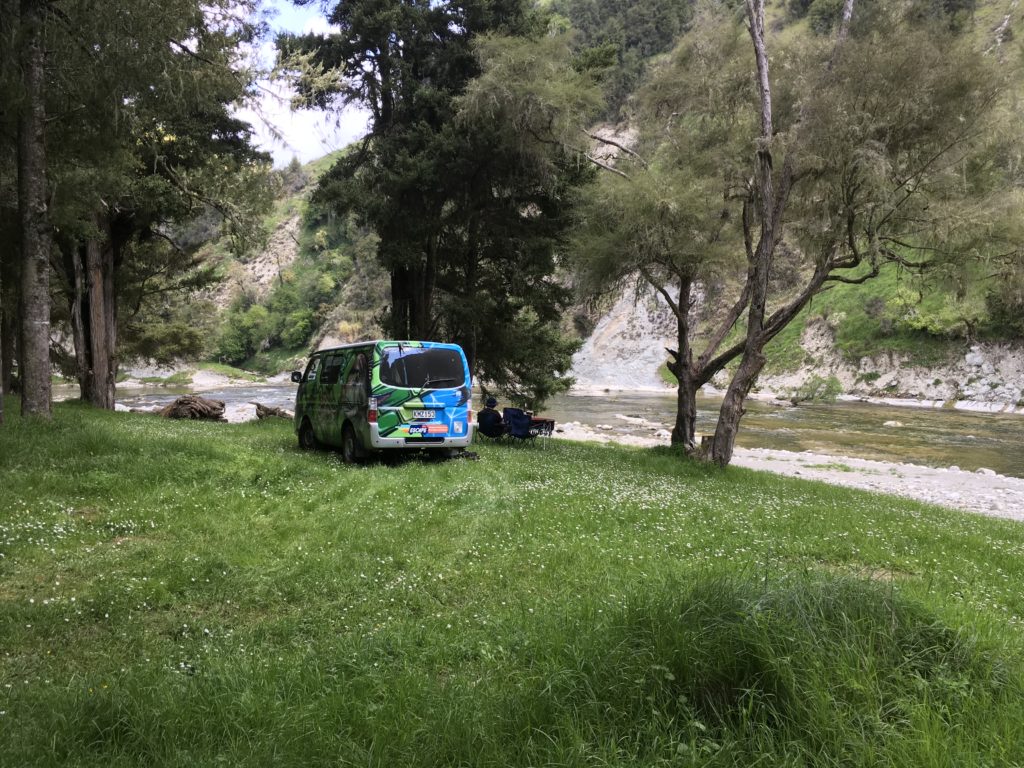
One of our many “freedom camping” (free but legal) spots for the night, alongside a river in a remote campground
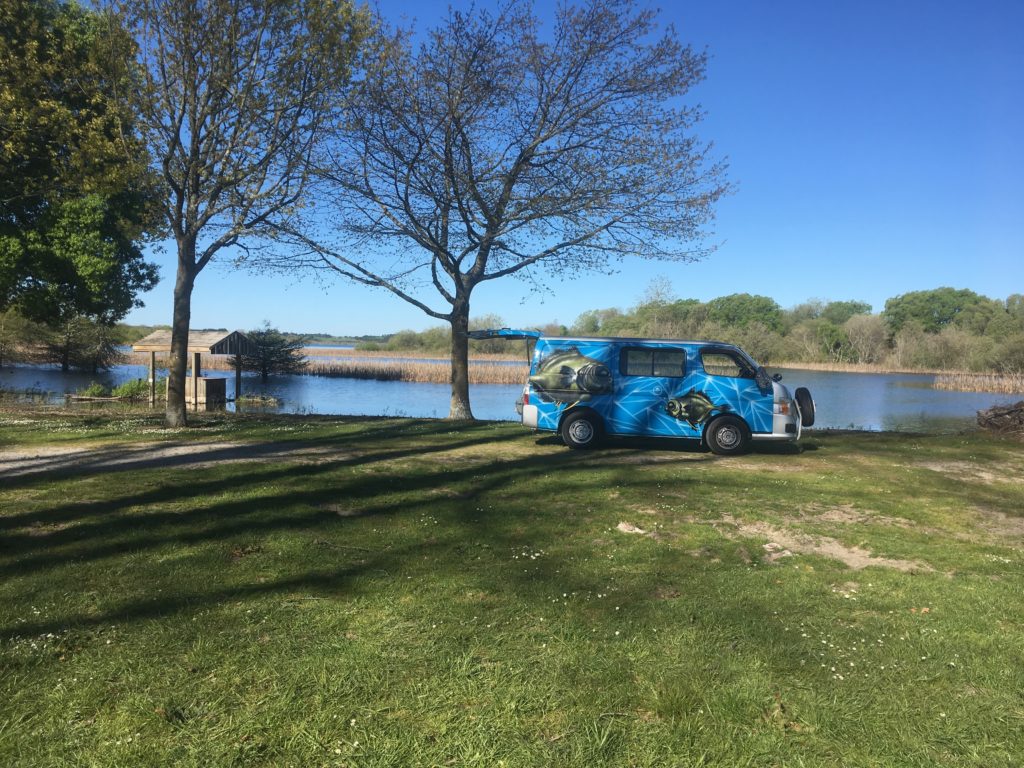
Another of our freedom camping locations, this one alongside a lake. All of the free campgrounds we chose had clean toilets with paper supplied!
And then there is the matter of public toilets. Every town no matter how small, has at least one set of public toilets, maintained by the locale. Now, isn’t that civilized? They are usually clean and well-maintained. In the U.S., gas stations often fulfill that function, but often only if you get gas there. And there are low cost public showering facilities, especially in the regions where people are prone to take a dip in thermal mineral pools in a natural setting without showering facilities. Just today, after freedom camping for two days with access to toilets, running water and garbage disposal, but no shower, we helped ourselves to a $3 private shower in a building right in the center of town on the waterfront in a city called Napier. The building was called an “I-site,” run by the federal government, just like similar I-sites throughout the nation. They are information centers and service centers for domestic and international travelers. They are staffed, clean, and modern. At the same location, there were bicycle tools available in case you needed them, as well as a park next door, peewee golf, and a yogurt and ice cream store.
And of course, it doesn’t take much for a country to be more civilized than the U.S. when it comes to low-cost, high quality health care. The New Zealand government provides discounts to all who need them, while the undiscounted prices for health care to a full time worker are within reason ($15 for an office visit). All employers contribute to the health care system in the same way that they contribute to workers comp in the US, and there is virtually no cost to the employee. Receiving health care is not linked to your employment. It takes about six months to be scheduled for elective surgeries like hip replacements: just about the same as the U.S., but at very little cost to New Zealanders.
In short, we felt safe and comfortable in New Zealand, relaxed with the familiarity of finally being back in a first world country..
Where did we go and what did we do during our land cruise?
Because we only had two weeks or so, and were scheduled to fly in and out of Auckland but didn’t want to be in a rush, we decided we would just tour the North Island this visit. That means we must come back again for the South Island, but no worries, mate!
We arrived late at night from French Polynesia so we spent two nights in the Sofitel Hotel, Viaduct Harbor, Auckland, to decompress before we picked up our rental vehicle and began our driving tour. What luxury! We had been in close quarters for so long that I hardly knew what to do with a king-sized bed. And the bedding! Oh my god it was like sleeping inside of a cloud. The area was right on the water with a brand new marina at our doorstep, and a vibrant night scene of restaurants and bars just down the street. We enjoyed a night out on the town and some sightseeing during the day.
The next morning we picked up our rental vehicle and drove a few hours southwest out of the city to the Waitomo Caves, the home of the famous glow worms. The worms are actually the larva stage of a fly, with bioluminescence akin to that of ocean plankton, hanging from cave walls to attract food. What is odd about them is that the larva stage is actually the bulk of their lives. They live in the larva stage for six months, and as a fly only three days, just long enough to mate and lay eggs. That still confounds me, having always thought that the larva stage was sort of pre-birth, almost like an embryo compared to a baby. But in this case, the larva stage IS their life. What is cool about them is that they light up the cave ceilings like millions of miniature Christmas lights. On the recommendation of the youth hostel manager, we went with the local company called Spellbound who leads only small groups of less than 12, including a raft ride through a river flowing through a bioluminescent cave. Awesome!
Next we drove east through the countryside to Rotorua, well known for its hot springs, geysers and Maori cultural performances. Rick didn’t care for the feeling he got in Rotorua: strips of hotel after hotel, lots of glitz, lots of traffic and very touristy. So we decided to forego the cultural shows and the geyser parks, and head down towards Lake Taupo for possibly some more natural, authentic and hopefully free experiences. And we found them! We visited Huka Falls, a geyser show that they let us into for free, and even found a public hot springs pool where we were the only visitors.

The community hot springs pool we discovered through our CamperMate app. It is continually refreshed with new hot water as the spring runs through it. We were the only ones there. Changing rooms and fresh water were provided and it was all free of charge.
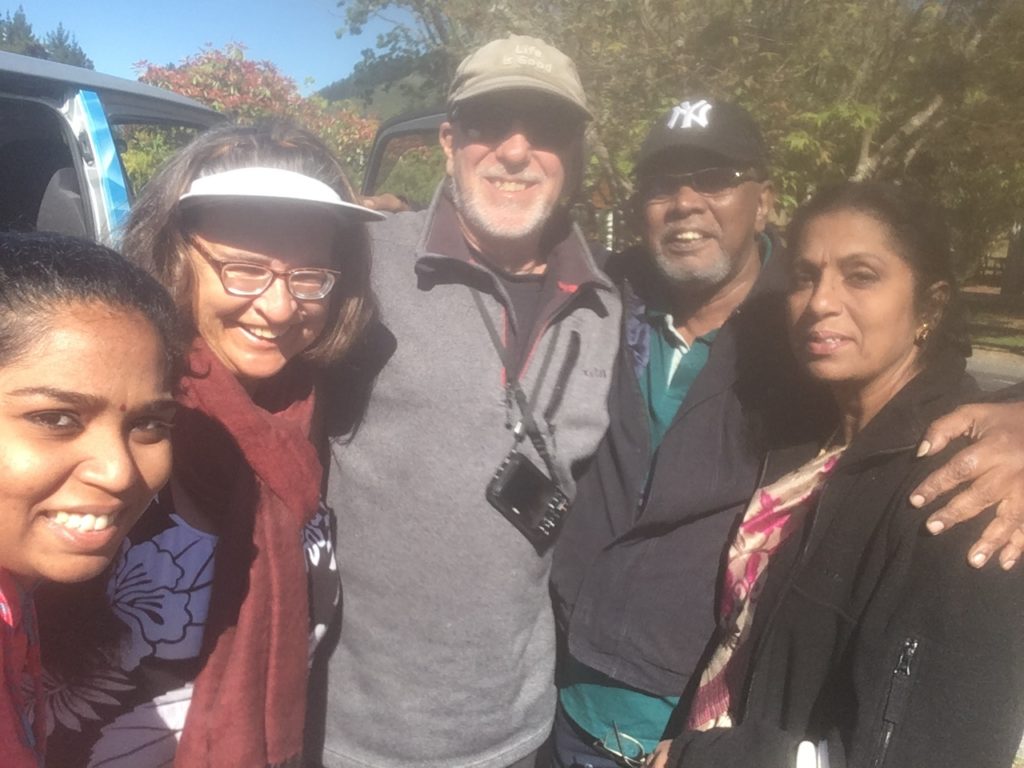
Leaving the Huka Falls area, we met this East Indian family who had taken a bus down from Rotorua and wanted a ride from the bus stop to a very expensive Hot Springs park. He was suffering from heart problems and couldn’t walk. We gave them a ride, but felt bad that they hadn’t saved their park entrance money to rent a car and find many free local sites to watch the bubbling mud and hot springs instead, like we did.
Next we drove down to Napier on the coast for a self-guided wine tour on bicycles, checking out various campgrounds along the way. The road to one of the campgrounds lead us along a Class II whitewater river that got us to thinking that we might be able to find a rafting or kayaking company somewhere around there. Sure enough, we came to the Mohaka Rafting Company and made arrangements for a Class III raft trip the next day.
Onward to Napier, a very clean and vibrant city with a large wine region, known for Bordeaux wines including Merlot, Cabernet and Syrah. Our raft guide, Anthony, nicknamed Anz, told us about a bicycle rental place on the coast where it was flat, with several wineries nearby. Another beautiful day was had bicycling, sipping wines and having a little lunch.
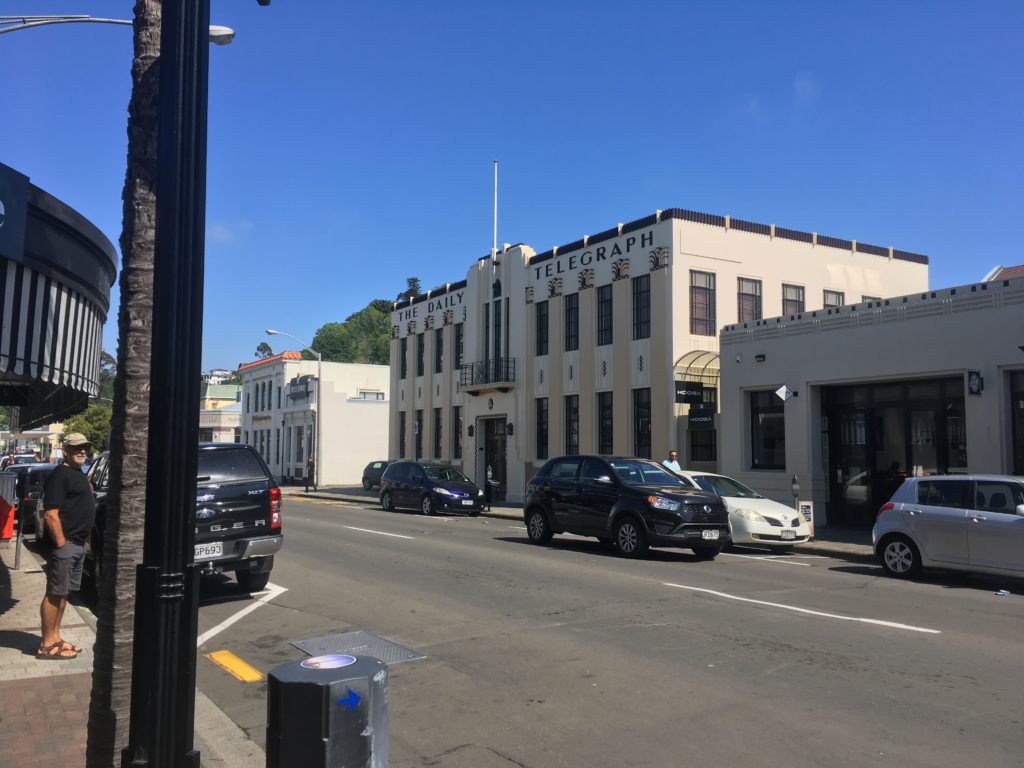
Napier was a beautiful town that took advantage of a devastating earthquake in 1931 to reinvent itself. As all the buildings had to be rebuilt, they decided to rebuild them all in the Art Deco style that was popular at the time. So the town is full of gorgeous buildings. It is also one of the last populated stops heading north along the coast, so it is is commercial and shopping center. The waterfront is beautifully landscaped, clean and offers all kinds of services to travelers and vacationers.
From Napier we headed north up the East Cape, a remote and largely Maori region of the country. There really weren’t many tourist sites along that route, and that may be why we chose it. We went to the Tairawhiti Museum in Gisborne to see some history of the Maori culture, while Rick’s suitcoat we bought at an Op Shop in Auckland was being altered. Rick walked the historic wharf in Tolaga, allegedly the longest wharf in the Southern Hemisphere (660 meters). We stopped St. Mary’s Church, a 1924 church that integrates Maori spirituality and superb Maori craftsmanship of woodworking, weaving and stained glass into a nondenominational spiritual center. We walked around the 350-year old, 40 meter wide pohutukawa tree, native to New Zealand, in Te Araroa. We drove along the Karangahake Gorge.
It was our intention to go visit the Coromandel Penninsula next, but somehow we decided we would drive up to the Bay of Islands north of Auckland instead, where a bunch of our friends had just arrived after sailing all the way across the Pacific this season. We had spent time with all of them in French Polynesia and now all but us had taken their boats the rest of the way.

Rick presenting his just-steamed greenlipped oysters with garlic butter and wine for dinner. Life is good.
Finally, we managed to get our vehicle back to the rental location 15 days after we arrived, and flew to Sydney to begin our Royal Caribbean Cruise.
How did we get around and where did we stay?
There were many options for campervan styles, companies and prices, but our WiFi access was limited in Tahiti when we were doing the research. So when I found an inexpensive but reasonably equipped option, I reserved it with the knowledge that I could cancel with full refund if I found something better in the meantime. Well of course I never had the opportunity to do further research, so we ended up with an Escape Rentals campervan at only about $35 US per day. It was a simple van that you can’t stand up in. When set up, the bed takes up the whole campervan behind the front seats except the part furthest back, where a sink, counter, cooler, a few shelves, a portable stove and the portable toilet are located. It came with linens and folding chairs, and we added a folding table rental. If we were to do it again, I would try to get a deal on something a little bigger and better equipped, but the price was right and the van was entirely adequate. Besides, the paint job was outstanding!
Using the CamperMate app, we tried to alternate “freedom camping” with staying at paid campsites with access not only to toilets, but also access to kitchen facilities, hot showers, laundry, etc. The paid campsites, at $20 to $30 U.S. per night, really weren’t our preference; the freedom campsites were often much more rural and in more natural surroundings. We always chose freedom campsites that at least had a toilet so that we could avoid using our portable toilet at all. The paid campsites came in handy when it was time to wash some clothes, or when the weather got bad and we needed to have a place to stay warm and dry outside of the van.
Say What? and Other Cultural Differences
It was quite the relief to arrive in a country where the native language was essentially the same as our own. I remember getting into the elevator with other people at our Auckland hotel the first morning and finding myself momentarily confused about whether to say Bonjour or Hello. Finally, I didn’t have to strain to understand and be understood. However, as you might expect, the English langauge halfway across the planet has evolved differently from ours. And things we take for granted, like driving on the right, having the steering wheel in the left, and having traffic lights, are not the rule in New Zealand. Here are some examples:
Tyre = tire
Trolley or trundle = Shoppjng cart
Take away = Takeout food
Give way = Yield, as in a street sign
Mate = friend
Gudday = Good Day, the typical greeting to a stranger passing by
Works ahead = Construction Zone Ahead
Km, liters, meters = the metric system is used, as it is in most of the rest of the world, instead of miles and gallons
Motorway = Freeway
Hire = rent
Roundabouts = instead of traffic signals, almost all of the intersections have a round no-go zone in the middle and a driving circle around it. You just enter the circle (to the left) when it is safe and exit where you need to. The traffic gets through intersections much faster this way, although at first it is somewhat disconcerting before you get accustomed to them, just like driving on the left, turning right into the left lane, and getting into the car on the right side to get behind the steering wheel. The turn signal is on the left of the steering wheel and the window shield wipers are on the right. We heard today (thanks, Kim!) that others who have experienced this difference have said that their windowshield was always very clean, since their attempt to signal always started on the wrong side where the window washing lever was instead!
New Zealand vía Royal Caribbean Cruise Ship
Rick and I hadn’t been on a cruise ship since the late 90’s when we won a short Mexican cruise on Carnival lines that we hated. So we were skeptical. But we so wanted to have quality time with my sister Kim and brother-in-law Pete Murphy that we decided to risk it. Well, aside from the fact that the cruise ship had to cancel it’s voyage around the south end of the South Island due to weather, and the the fact that we ate and drank too much, the trip was absolutely glorious. Of course, the best part was just spending time with Kim and Pete. But the absolute lack of any responsibilities besides getting ourselves to dinner on time was fabulous. Our bed was made and our room cleaned twice a day. What luxury!
We met Kim and Pete in Sydney and went to the Sydney Opera House to see Evita the night before embarking on the cruise. Our first port was Marlborough Sounds at the northwest side of the South Island, where we took a wine tasting tour of that famous region. We then stopped in Wellington where we rode the cable car, took an epic city hike past sculptures and into craft beer taverns, and toured part of New Zealand’s best museum, focusing on the Maori culture section.
Back on the ship, we went to shows, participated in fun dance classes, had a formal dinner every night in the main dining room plus enjoyed three specialty restaurants, had spa treatments, and played trivia games. Rick flew in the flying machine, and Kim and I took the gondola lift up high above the ship for a different perspective. Rick and I took an “All Access” tour of the ship, including the bridge, the glass recycling room and giant rooms of provisions.
We usually found ourselves at our favorite pub with live entertainment well into the night, when we could stay up that late. I could live without ever hearing the song “Land Down Under” again, although the pub singer Martin’s interaction with the predominantly Aussie crowd was a riot. Aussies really like to party, in a way that may sometimes not be appropriate for polite company! For example, after midnight, the raunchy songs came out. When Martin sang the refrain, “will I ever see your face again?”, the entire crowded pub replied, “No way! Fuck you! Fuck off!” Say what? And when he sang a song called Alice, the crowd shouted in unison and in time to the music, “Alice, who the fuck is Alice?” You certainly don’t need to be self conscious in a crowd of Aussie’s – anything goes.
 Our talented and charming Italian waiter in the main dining room, Davide
Our talented and charming Italian waiter in the main dining room, Davide
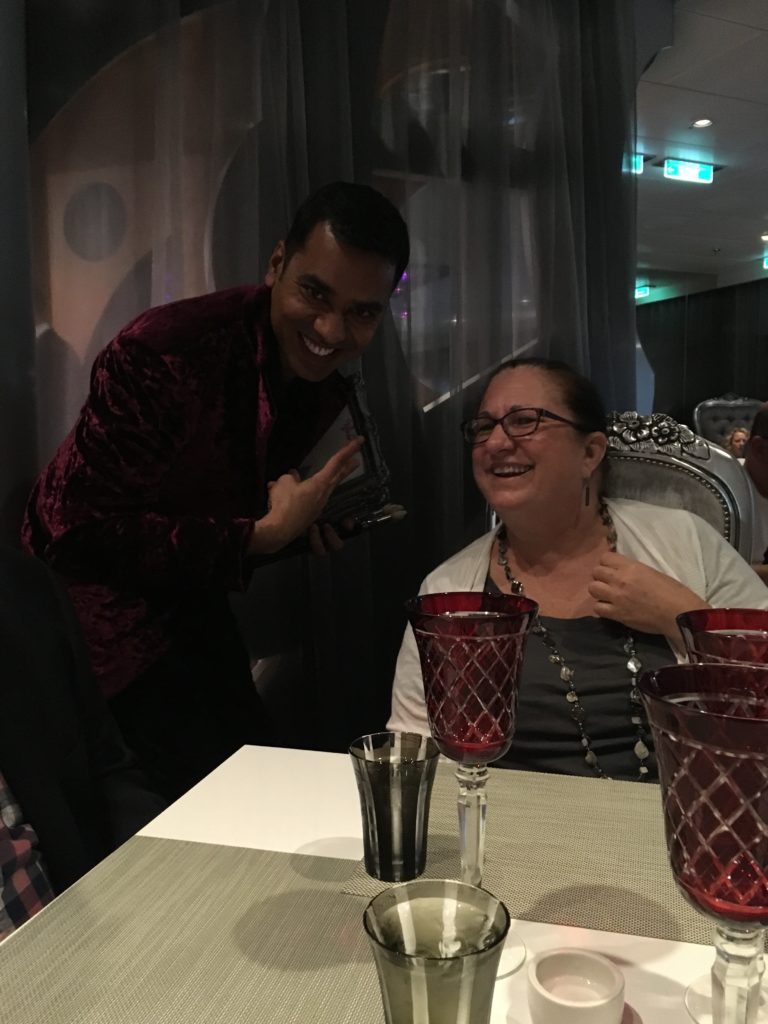
Kim goofing around with the waiter in the specialty restaurant called “Wonderland.” That was the most unusual restaurant I had ever been in. The food was made to look or taste like something else. For example, a “garden salad” was taken literally and included vegetables planted in what looked like dirt! It was actually ground pumpernickel bread, however. In spite of the fanciful presentations, the food was actually quite tasty.
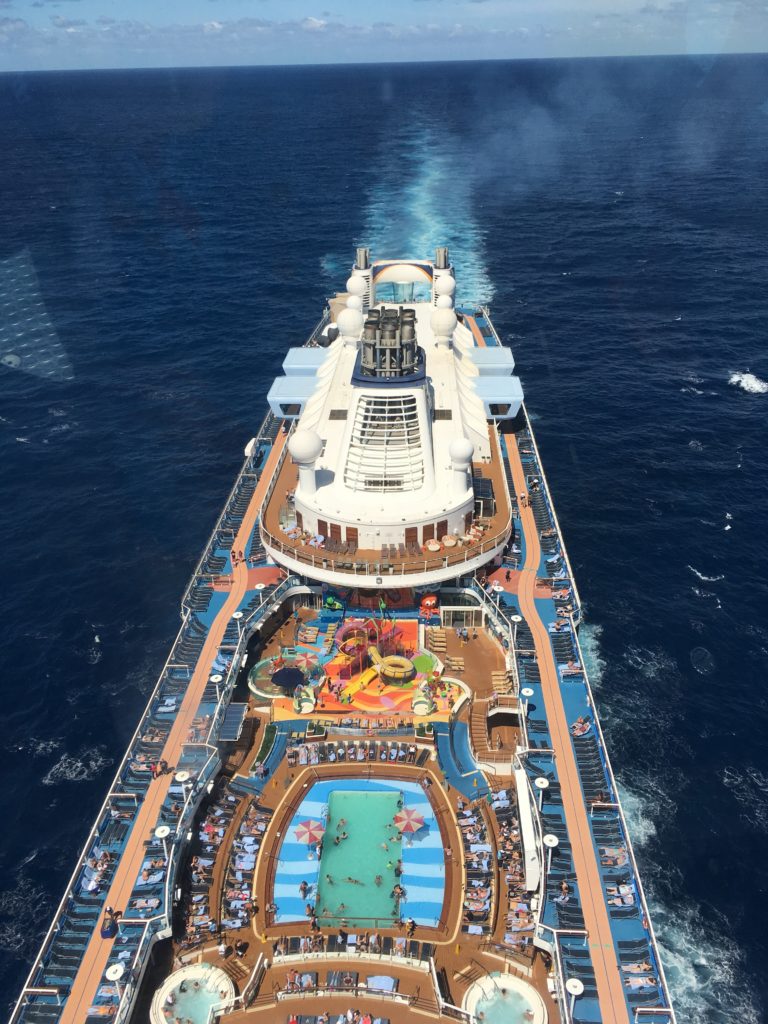
The view of the stern of the ship from the gondola that rose way above the deck. My fear of heights was sorely tested

Storerooms for food and drink for 4,000 guests plus crew are bigger than imaginable. For example, they have 62,000 eggs on board!
Our next port was Tauranga, where we took an excursion to Hobbiton. That was way bigger and more elaborate than we ever imagined, with literally a whole village of small round doors built into hillsides, and elaborate gardening and fencing made to fit the size of a Hobbit. This was the actual film set for the Hobbit and the Lord of the Rings trilogy.
Kim had made reservations at the Sky Tower for lunch for our stop in Auckland, with magnificent city views on a rotating restaurant. And then we stopped in the Bay of Islands, which, after a tender ride, a bus ride, and a ferryboat ride, finally got us to the quaint town of Russell. It had been known as “hellhole” in the olden days for its reputation of drunken sailors and vile men on the run, but now it is anything but: the small town is full of art studios and cozy restaurants and plenty of high-end souvenirs, surrounded by yachts in a gorgeous bay speckled with uninhabited islands.
It was sad when the trip ended, but it felt good to have so much time with Kim and Pete, and we all were ready to get back home. Kim and Pete had left 6 weeks earlier for a succession of two cruises starting in Seattle all the way to Australia, and Rick and I hadn’t been home for over a year. It was really nice to get home.

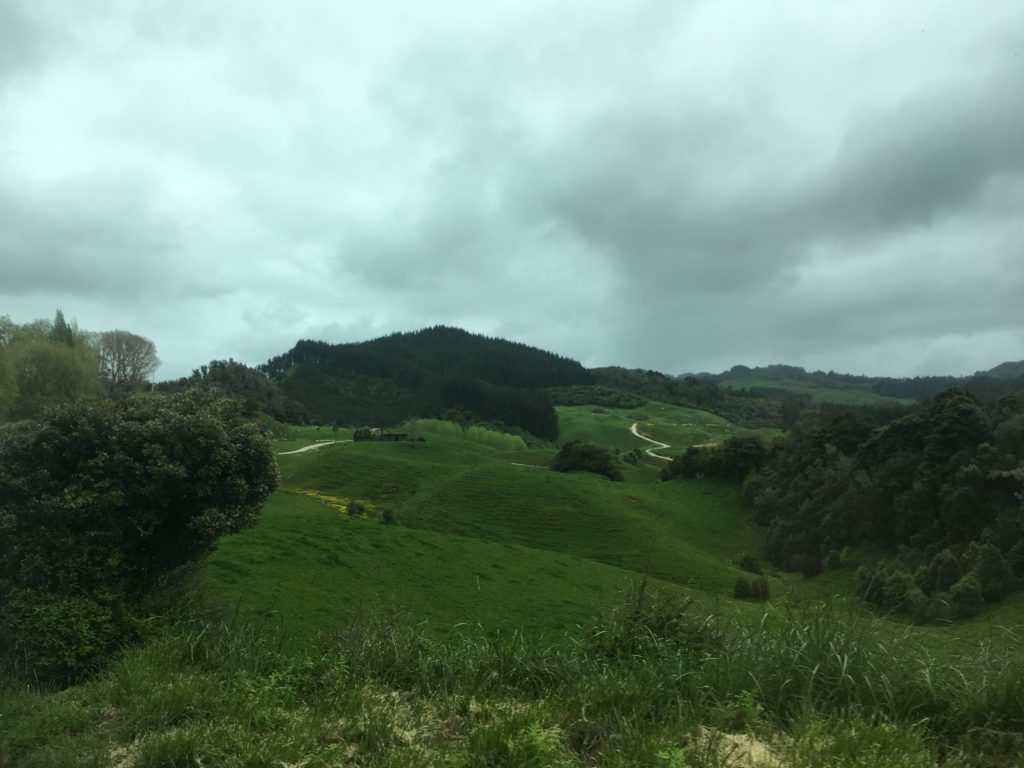
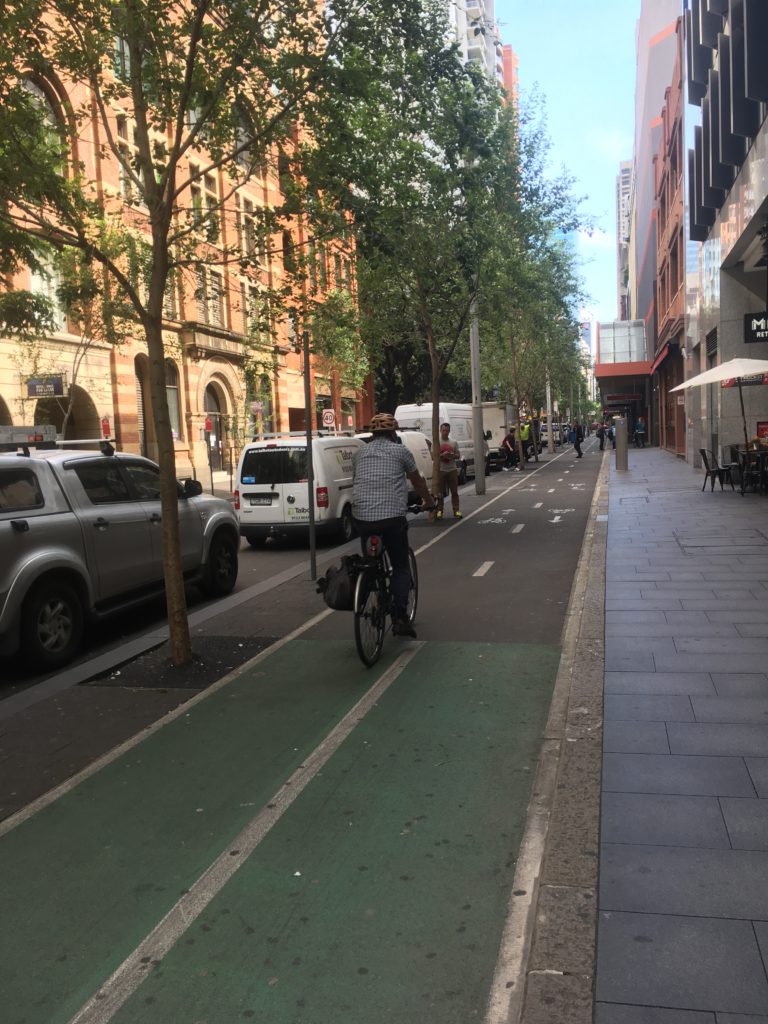
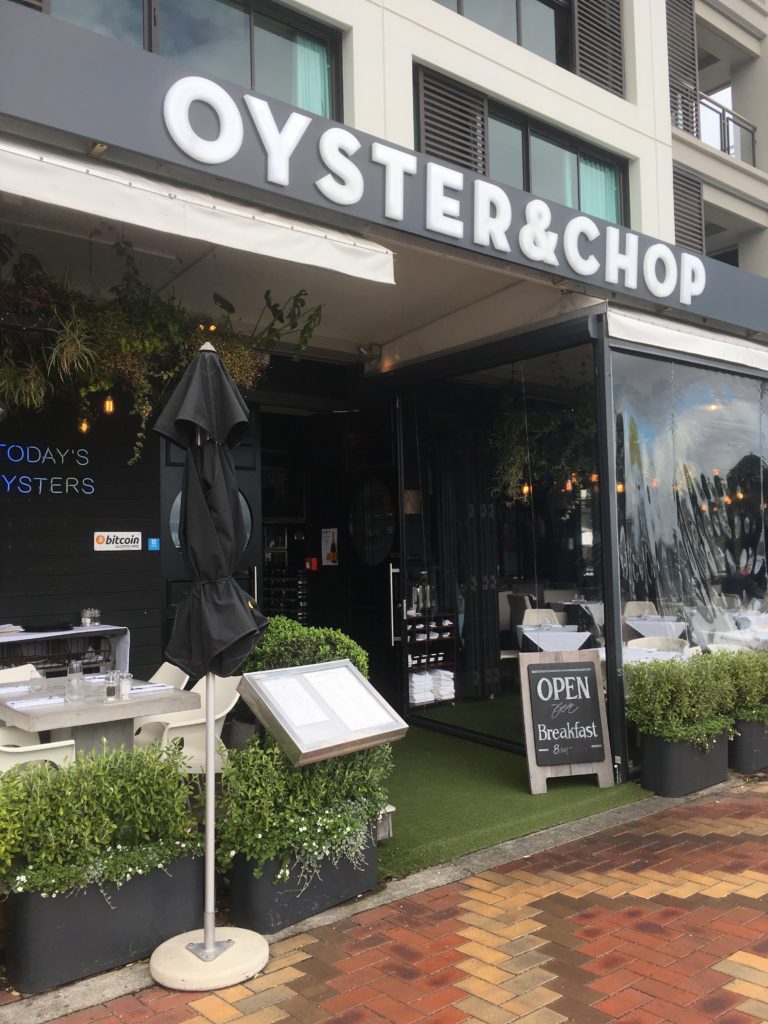
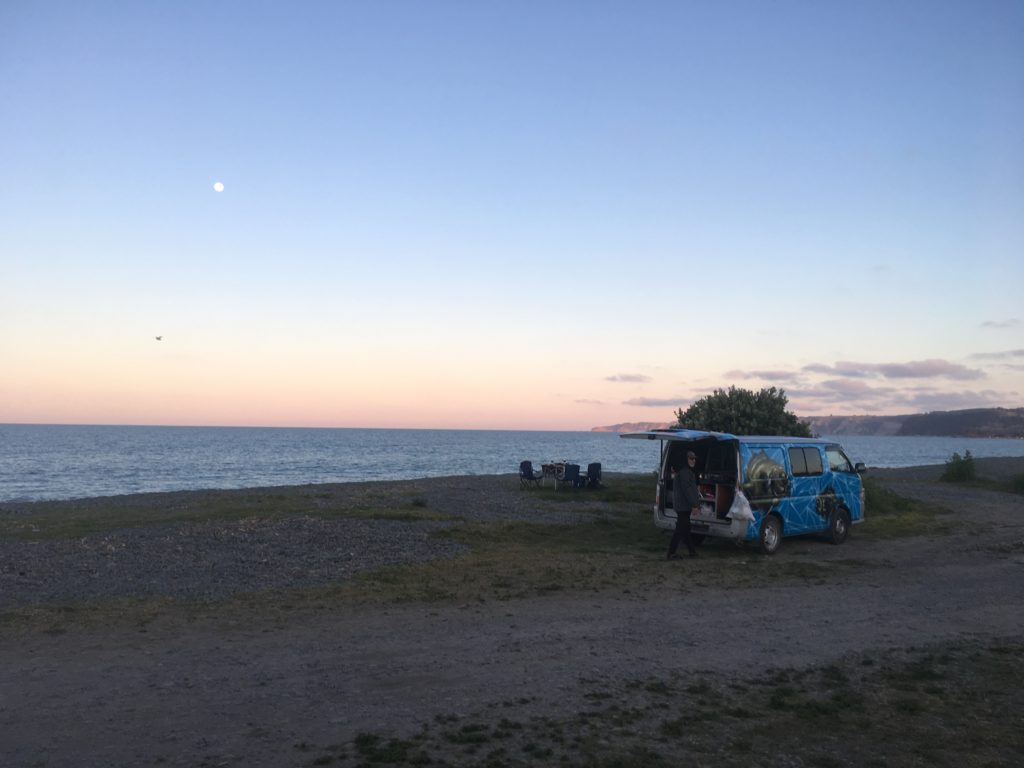
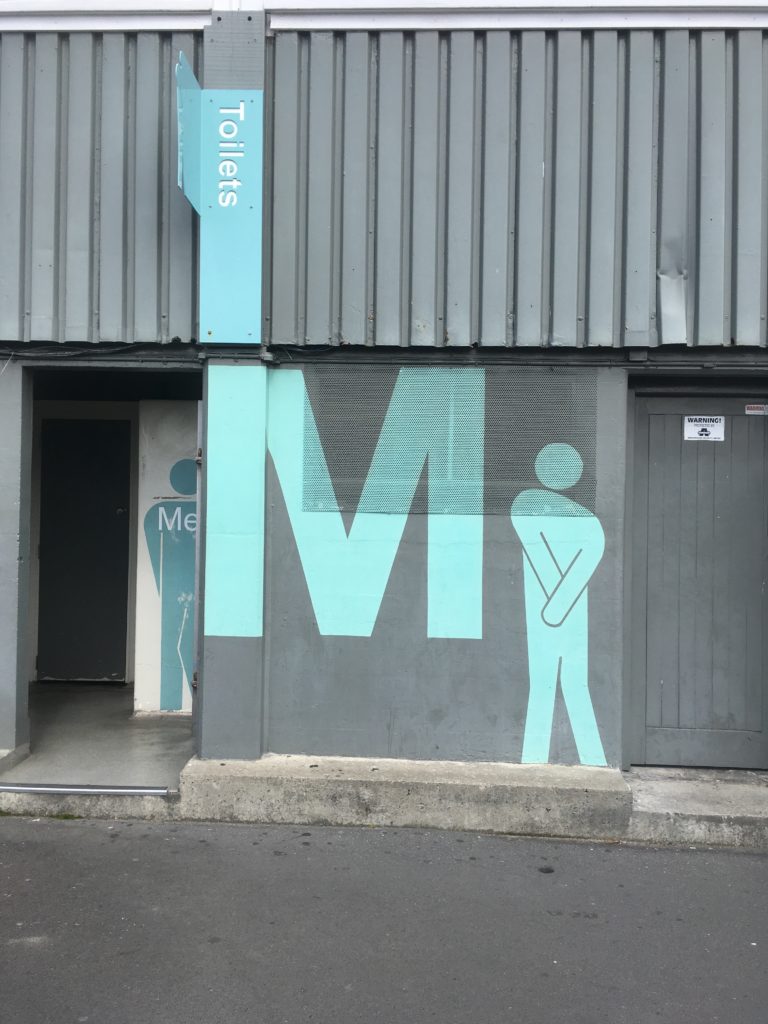
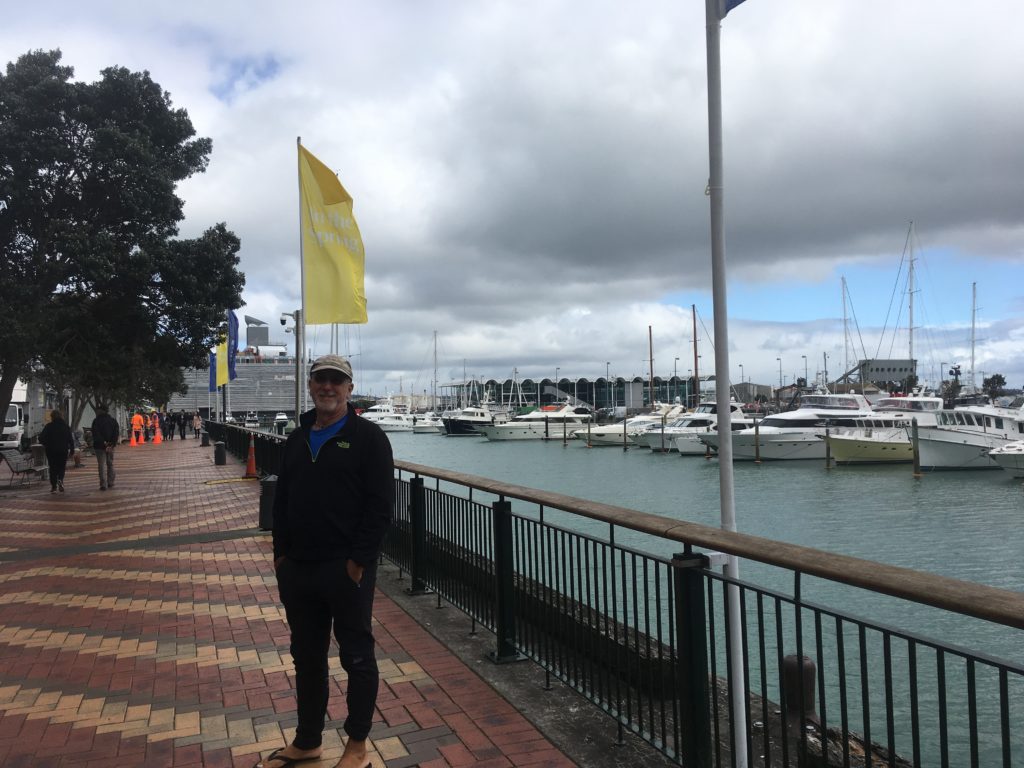
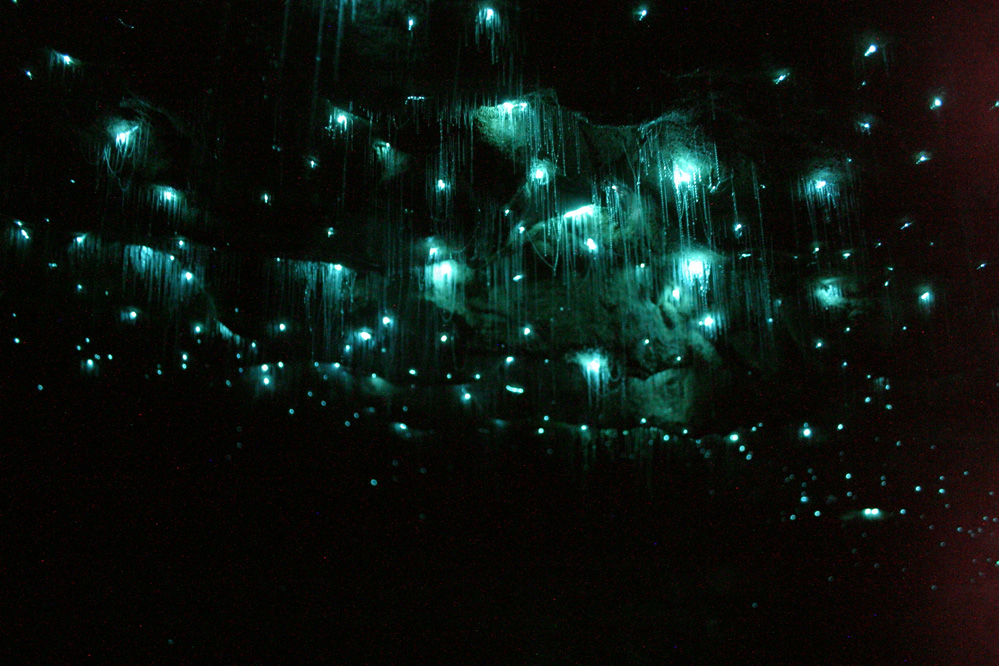
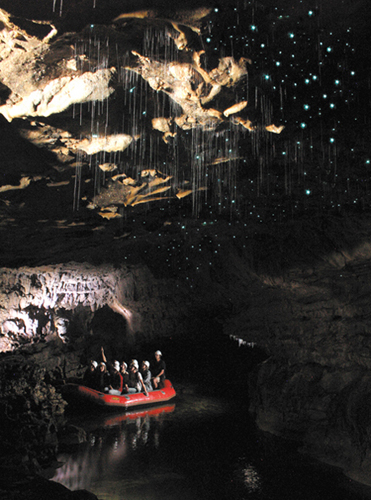
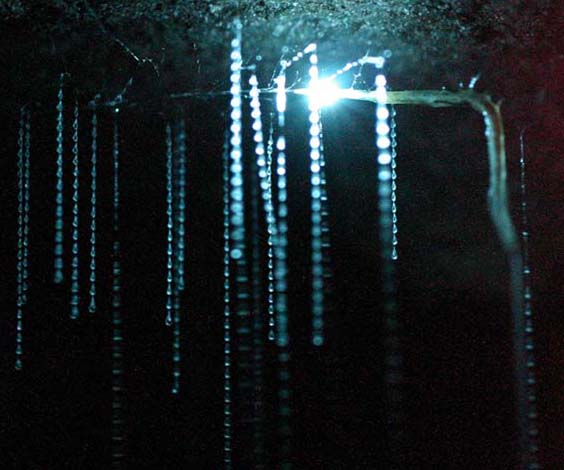


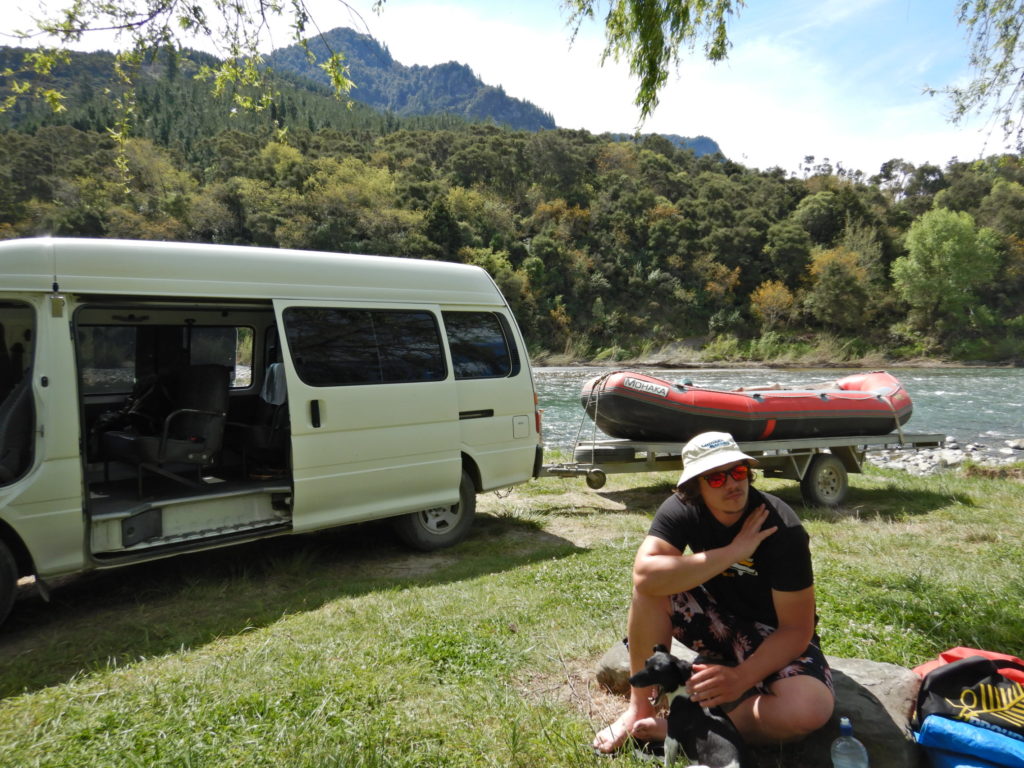
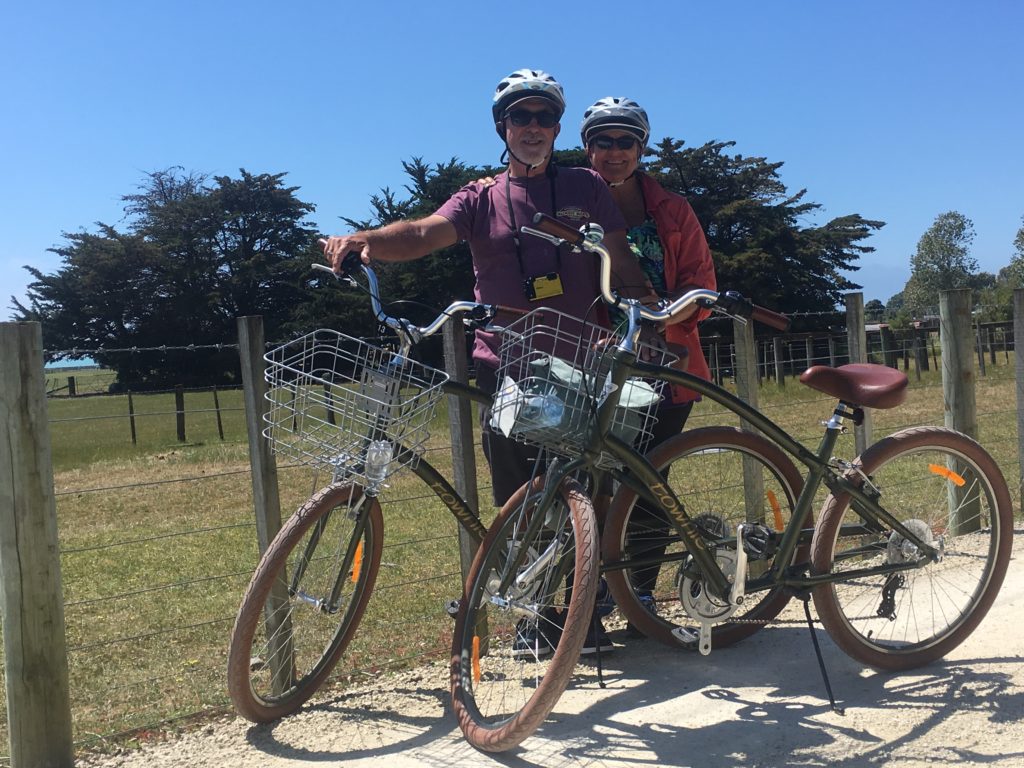








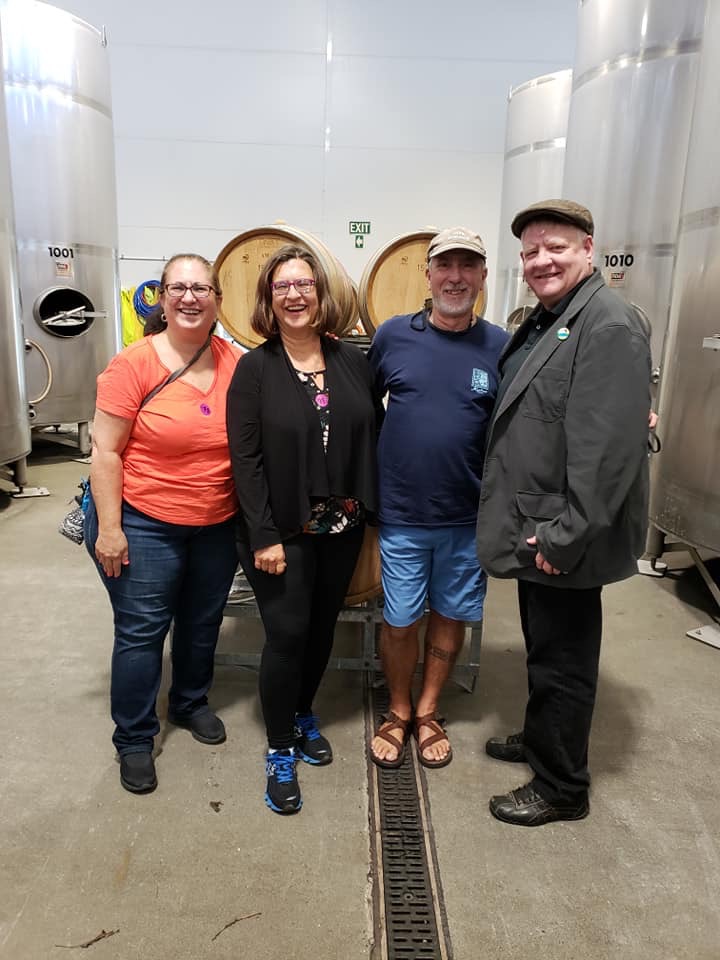





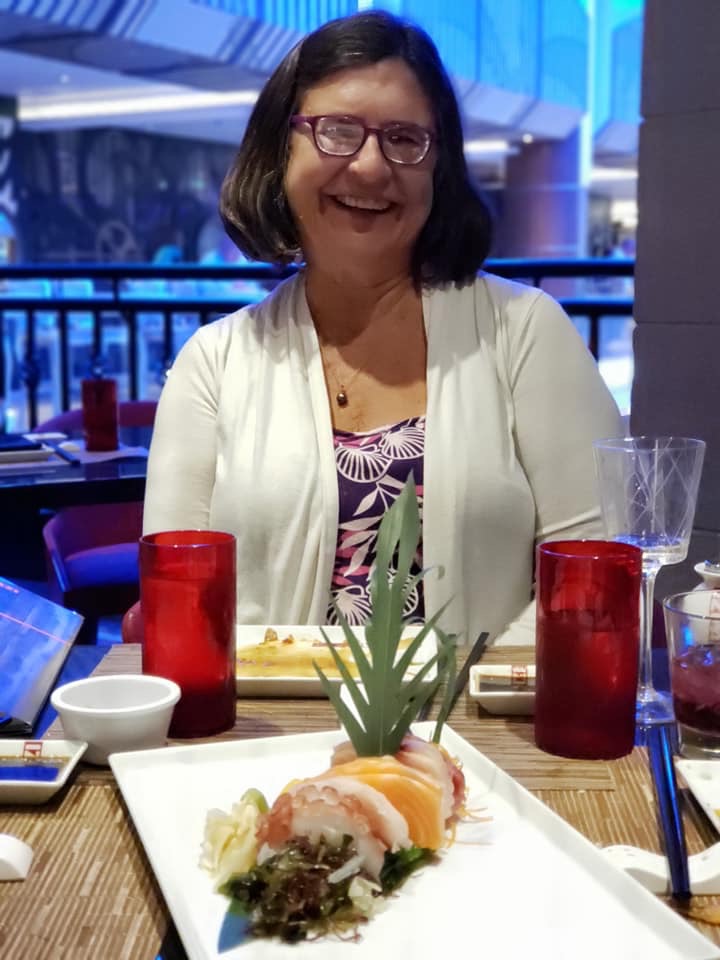


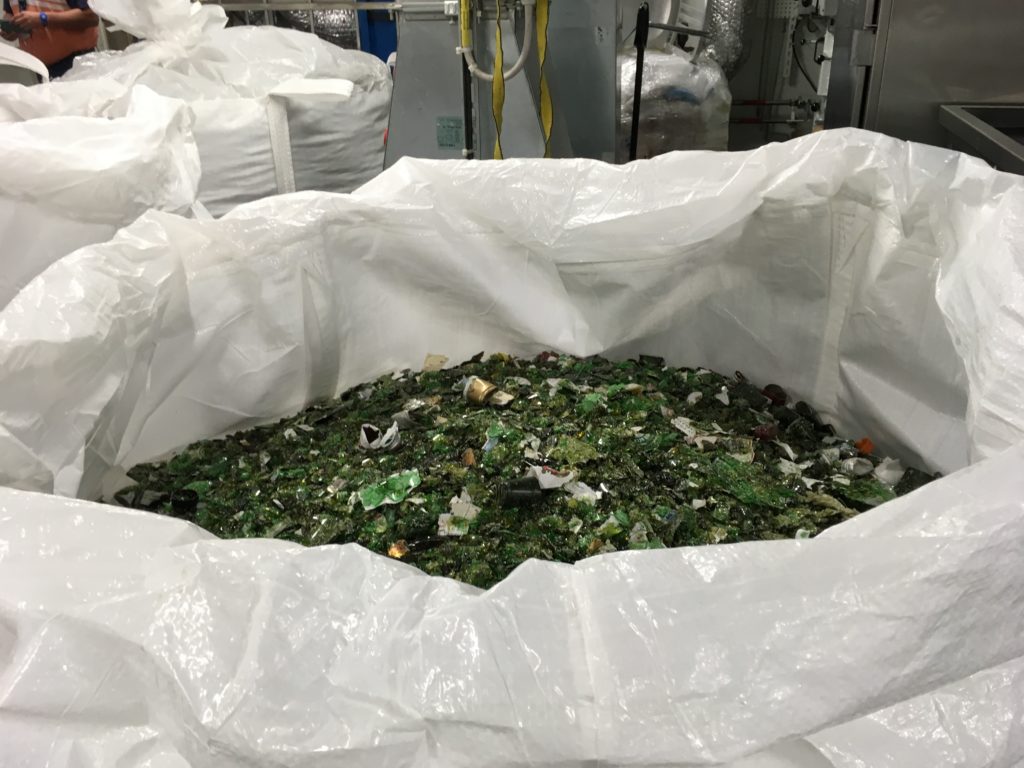


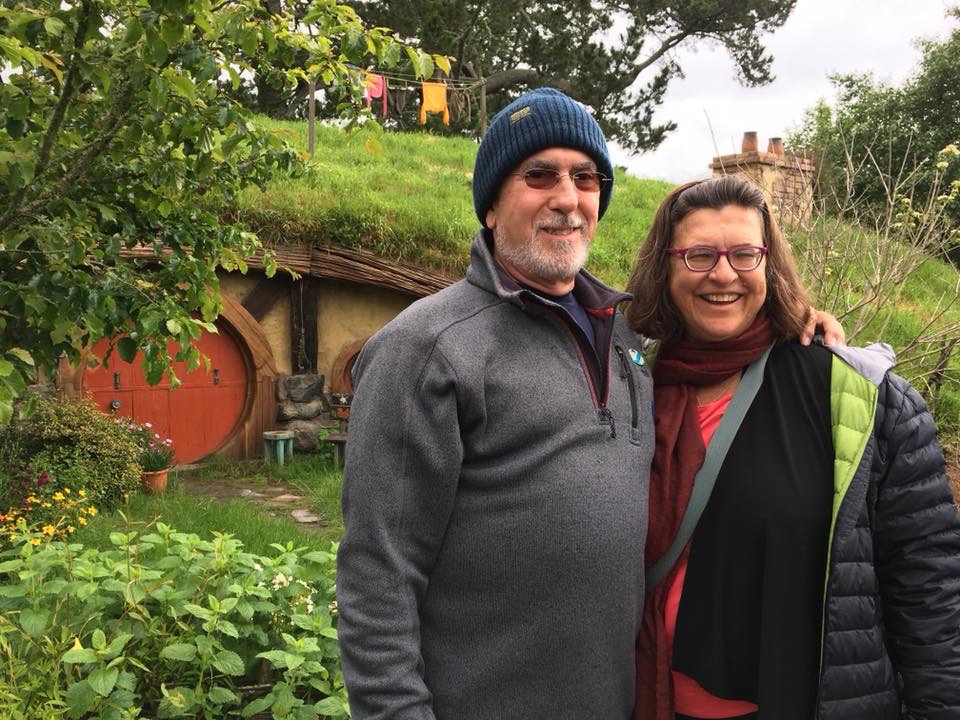
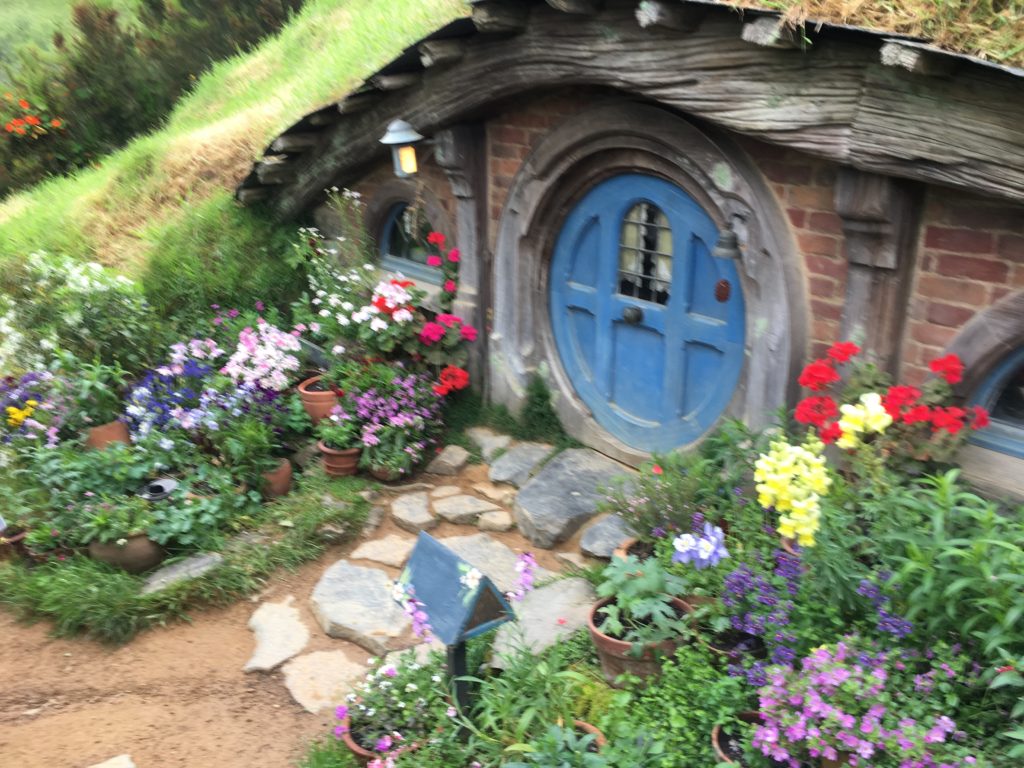
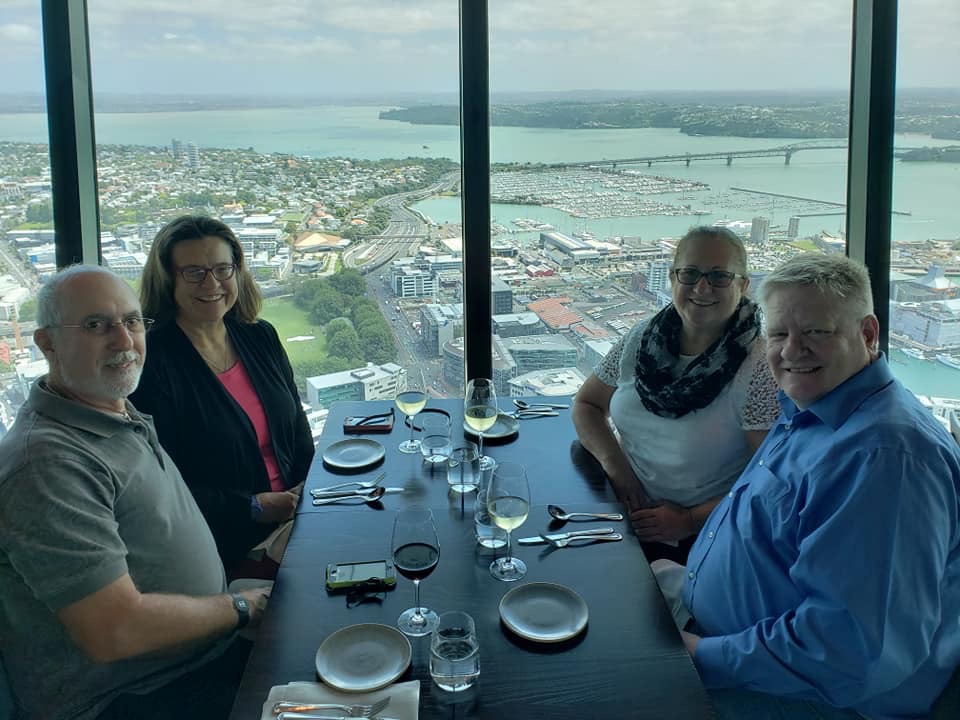
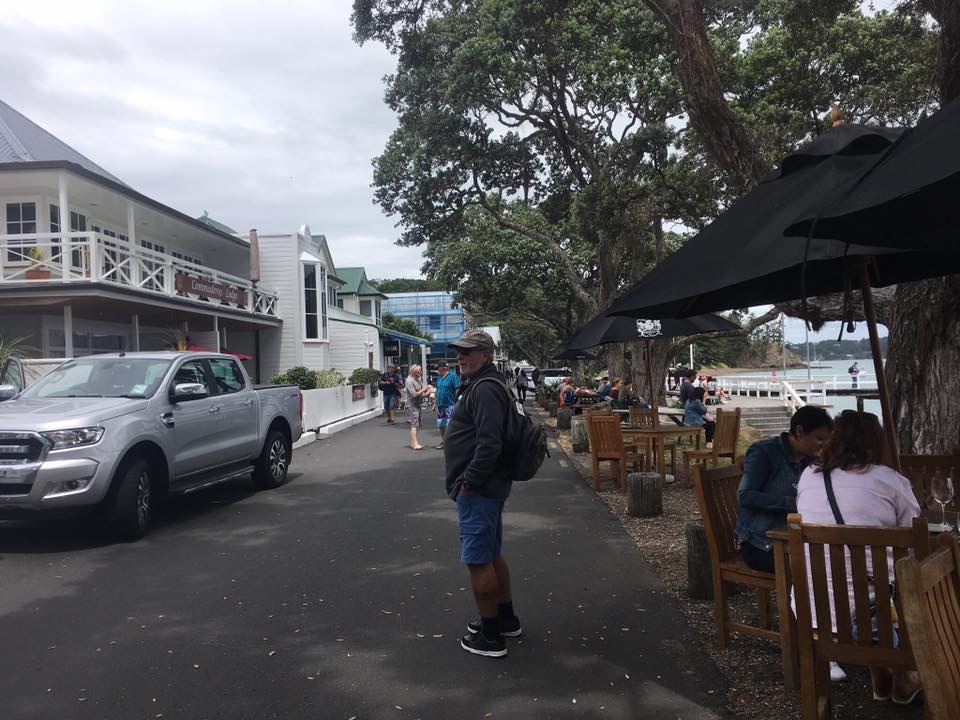
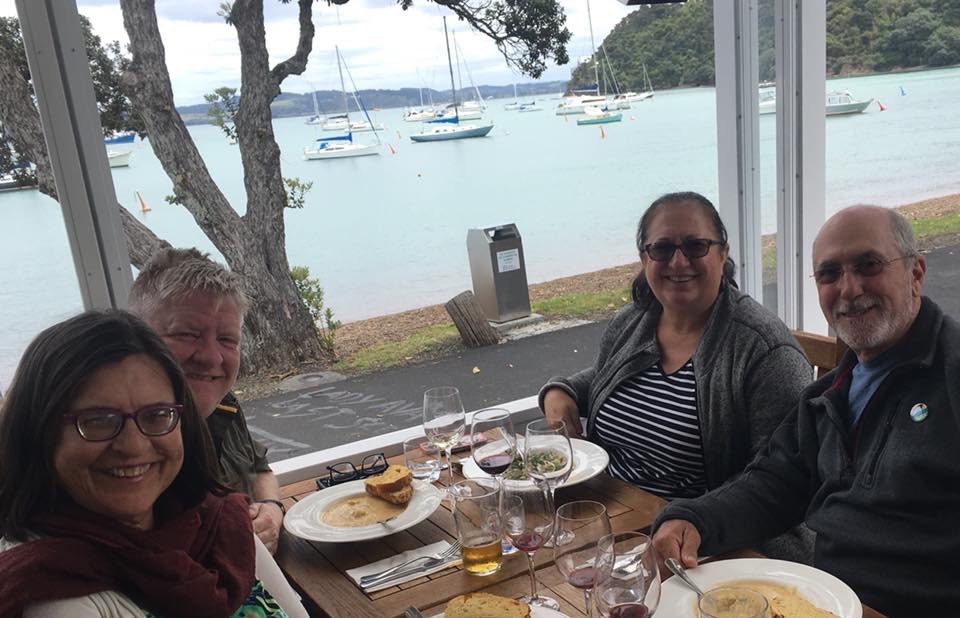
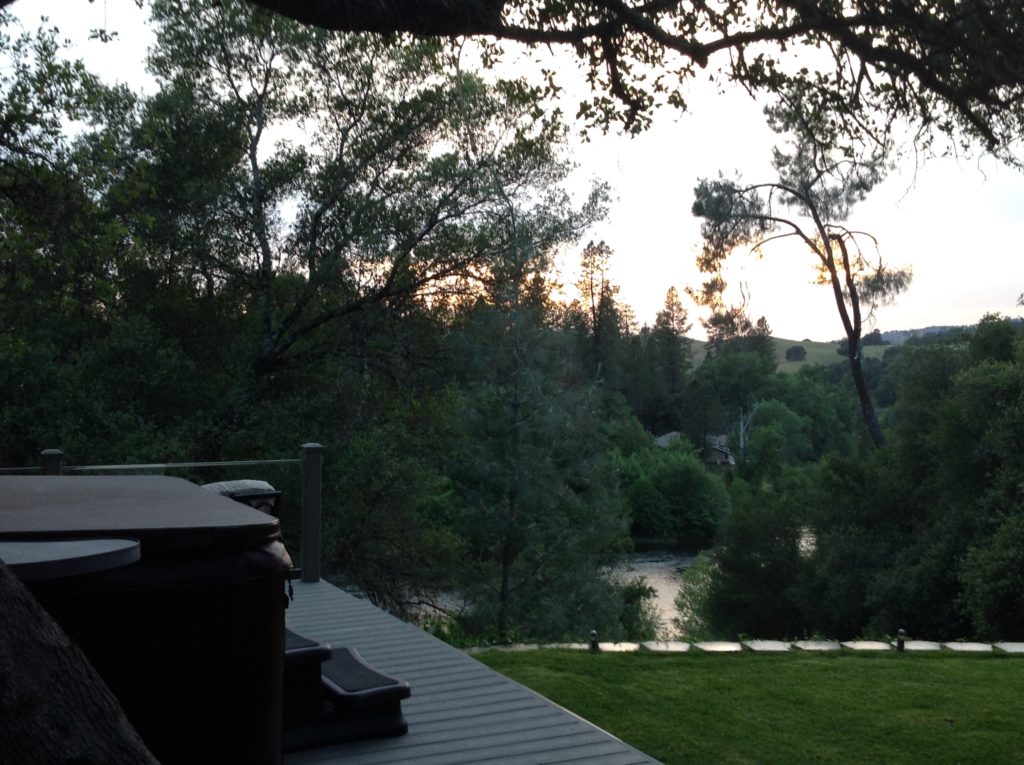
Hi Rick & Cindy
Saw your video and read about your 31′ . Awesome adventure. Just love both your excitement and spirit. Give me a call when you come over to Malaysia. Be fun to show you some places. I have a Mason 44′ 1986.
Hi Cindy, you beautiful woman! I lurched into your blog as i was looking for your phone number (nothing important just saying hi) and what a wonderful surprise…I’ve had the most wonderful time. Thank you for being so adventurous and writing about it!!!! Jody
Hey Jody! Wow! It has been what, 20 years since I have seen you? I hope all is well, and thank you so much for finding me. I am glad you are enjoying our adventures.